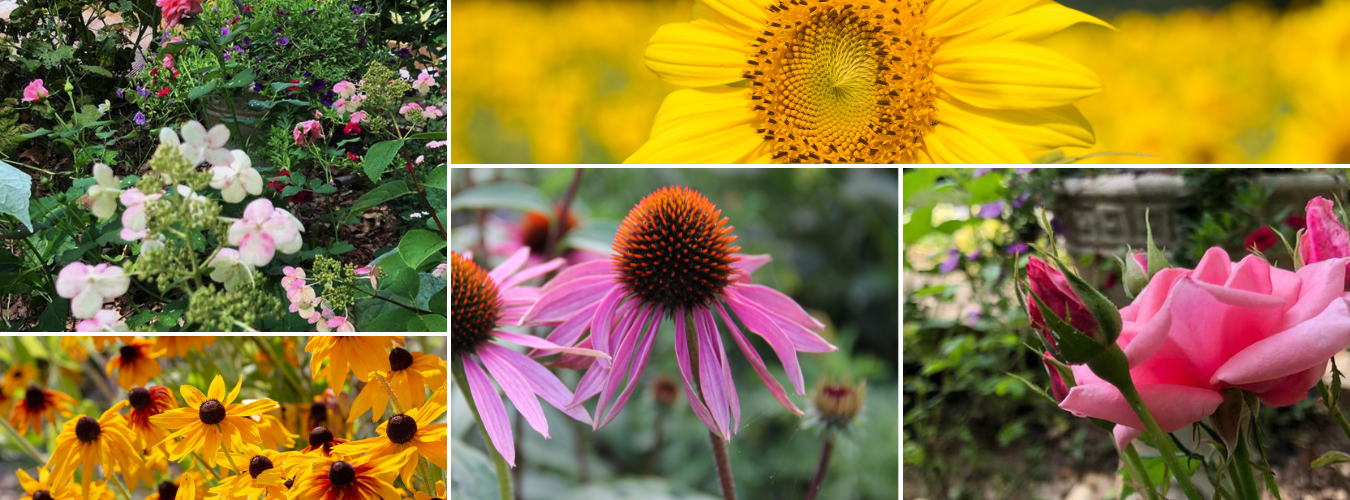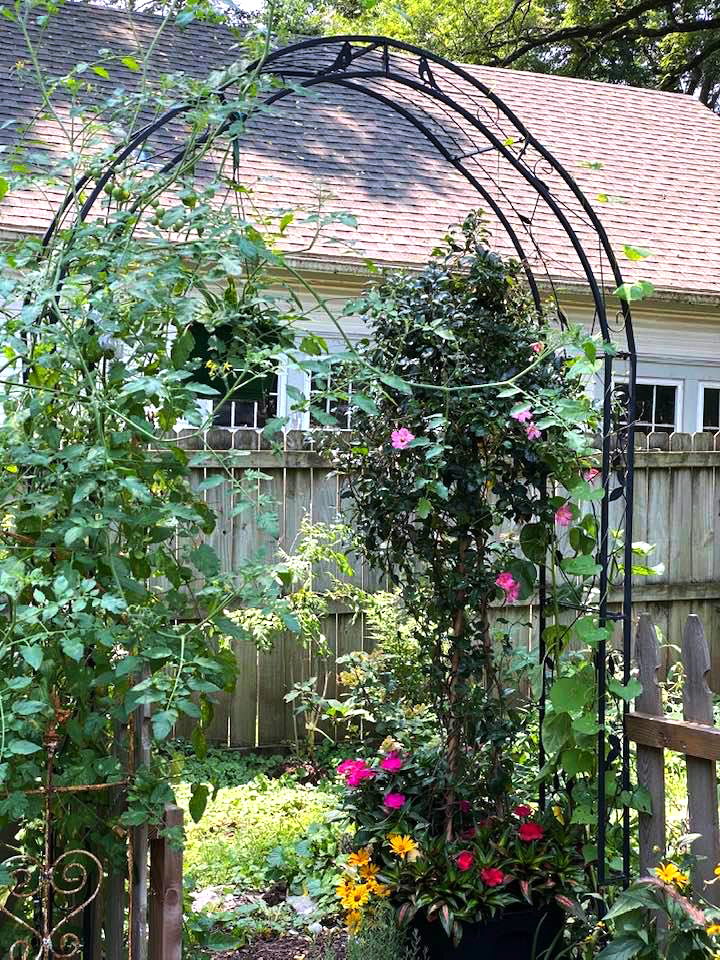I subscribe to the gardening principle that gardens should be layered, with taller plants in the back, medium-sized plants in front of those, and the shortest plants in front of the other two layers. The magazine Fine Gardening provided the following graphic to explain that tenet:

Fine Gardening September and October Issue 2021
That being said, I do like to add vertical features throughout my garden plantings. I like the way that these vertical spots add variety to what otherwise might become too much the same.
Better Homes and Gardens has another great online site that offers all sorts of garden tips. In regards to adding height in gardens, they comment about how one featured couple “… group attractive containers on a plant stand to make use of vertical growing space in their small Southern California garden. The effect has a big impact without taking up a lot of ground”
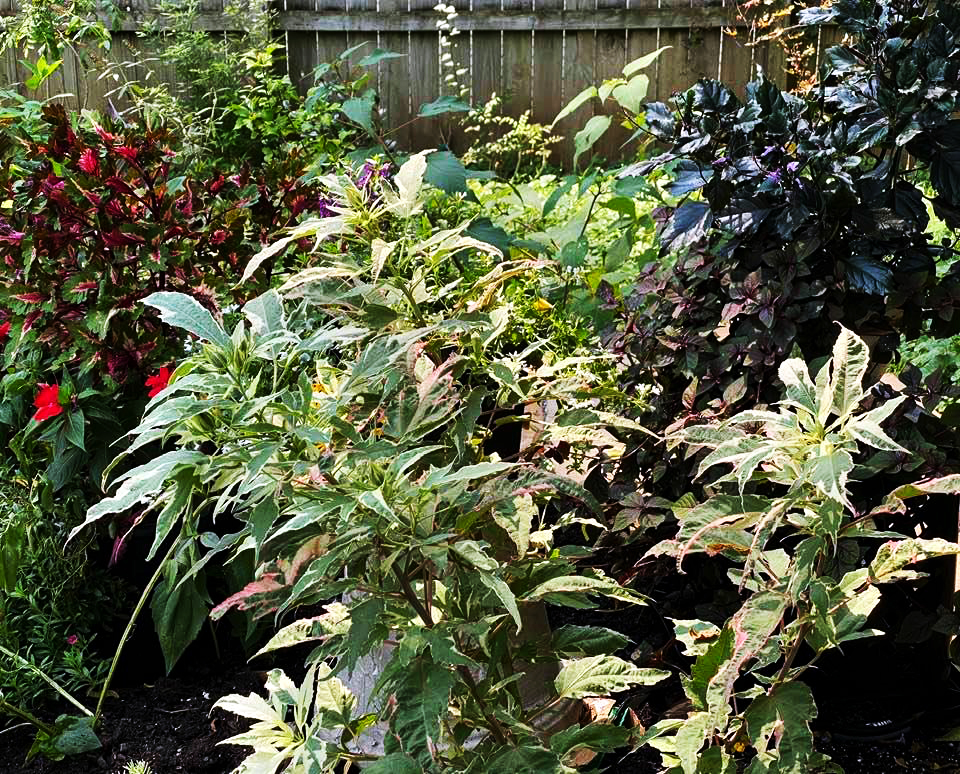
Jacki Kellum Garden
In the above photo, you see that I have staggered the heights of my containers by placing them on varying heights of other containers. One plant rests on the upturned bottom of another large pot, and the darkest plant in the back is resting on top of an upturned laundry basket. When I have fully planted this area, you will not notice the black basket, which is the same color as the container above it.
Better Homes and Gardens adds:
“Here’s a tip: You can do the same thing by displaying your favorite collections on vertical surfaces such as walls or fences.”
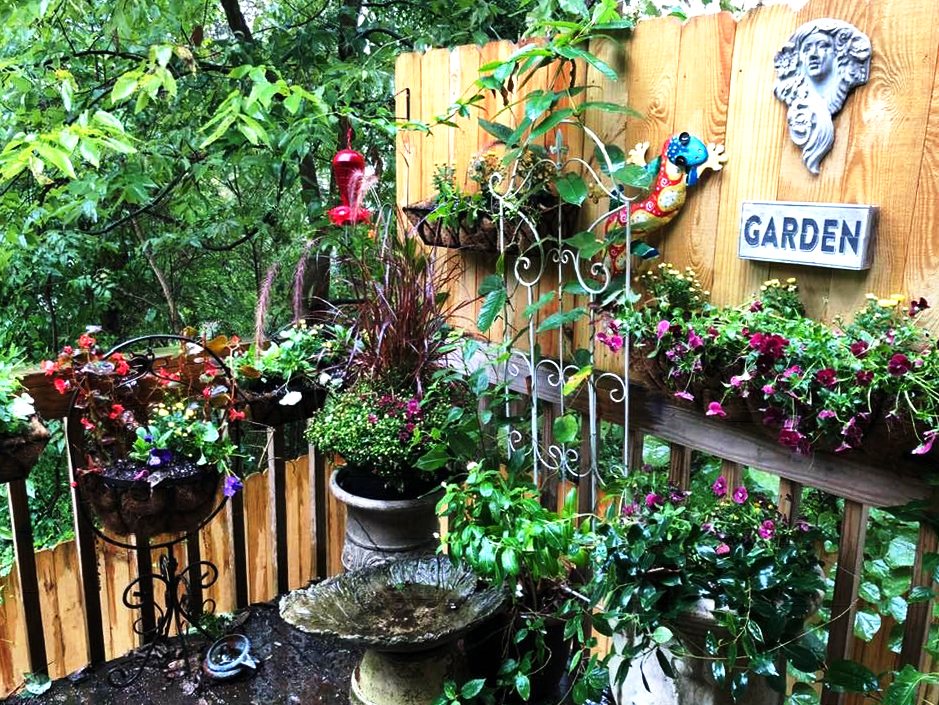
Jacki Kellum Second Story Wall Garden
I am a huge fan of adding walls and wall gardens in various spaces around my house.

This year, I built 2 garden walls that come together to create an outside sitting room outside my back door.
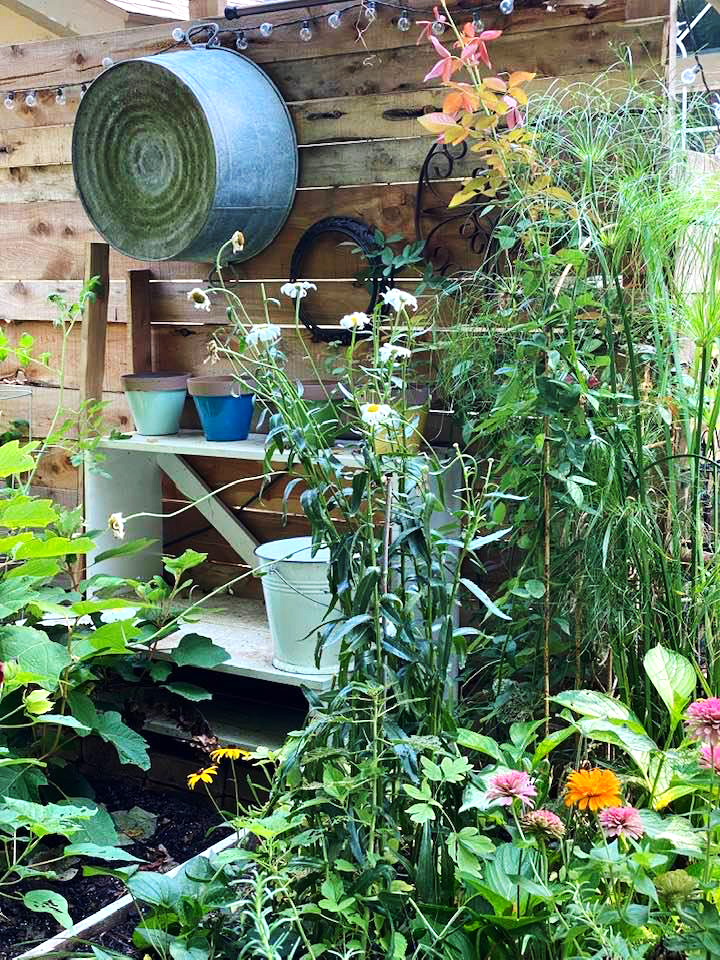
Jacki Kellum Outside Potting Bench
Zepherine Drouhin Rose is growing on the trellis which rests at the right end of the bench. It is not blooming now, but I still like its reddish greenery in this space.
Note: I have trellises all over my garden, and I use them to lift climbing roses above the [;ants that gros lower to the ground. I also use them to stake plants that grow taller but that want to droop, i.e., peonies, iris, and the King Tut grass that you also see growing on the other side of that trellis.

Jacki Kellum Garden
King Tut is a papyrus and it is not an actual grass, but I do use grasses to add height to my garden, too.

Jacki Kellum Garden
The lighter green grass is lemon grass, and the burgundy is purple fountain grass. The pink is an Arctic Fox foxglove. It is much shorter than the regular foxglove which grows earlier in the season, but it is still taller than most garden plants, and I use taller plants to add height and variety in my garden, too.
If you will look closely, you will see that lemon grass looks very much like the leaves or blades of daylilies. I grow daylilies both for that greenery and for their blossoms.
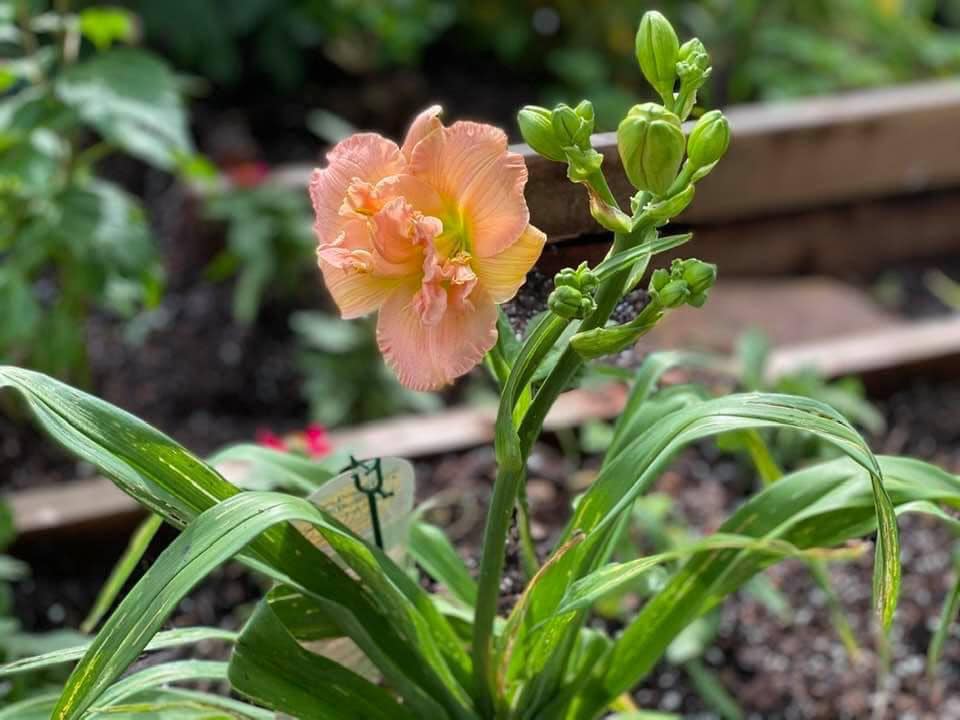
Siloam Double Classic Daylily in Jacki Kellum Garden
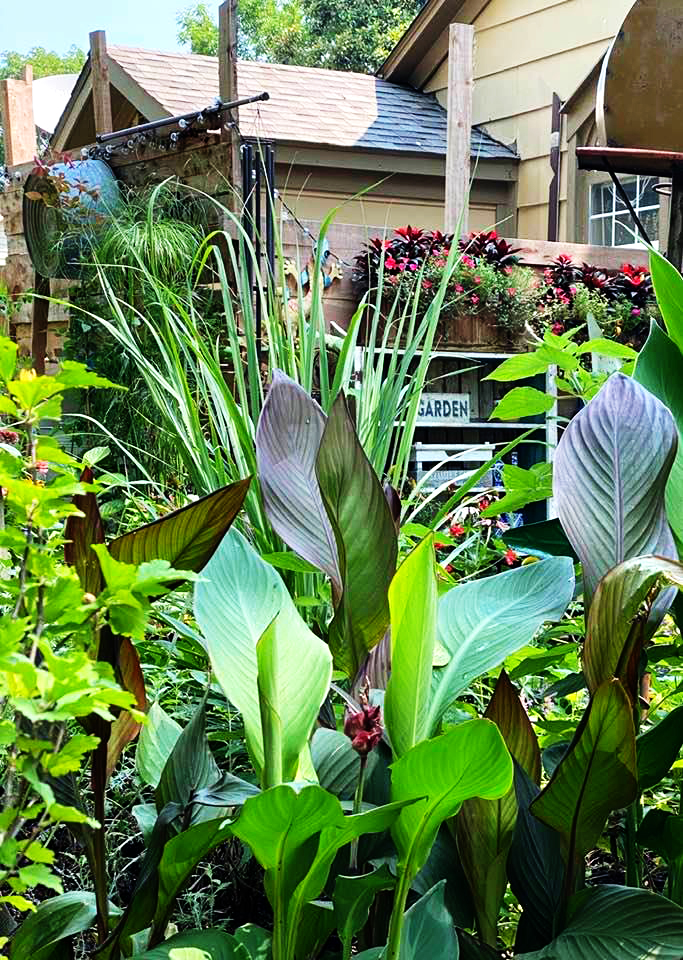
Jacki Kellum Garden
In the above photo, you see my cannas from behind. I plant cannas at the back of my garden. They create a natural wall against which to set the plants in front of it. I also have Russian sage, pineapple sage, and hollyhocks back here, but none of them are blooming now. Note: The greenery of plants is almost as valuable in the garden as the plant are when they have blooms.
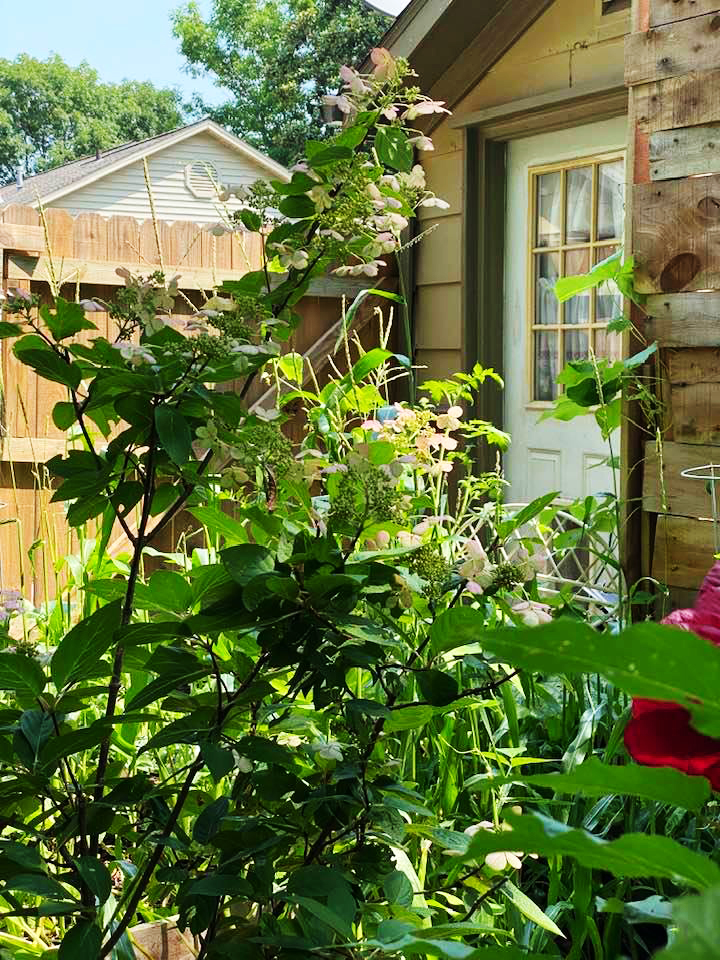
Jacki Kellum Garden
I use tall hydrangeas to add height to spots in the back of my garden. Quickfire Hydrangea is adding height to an area of my garden near my mudroom door. The potting bench is just to the right of this plant. The garden wall starts here, too.

Close look at My Quickfire Hydrangea today. The color changes.
I have added all sorts of ways to vary the heights of my garden features. I have added fences and wall gardens. I grow tall plants for the back of my garden. I have added trellises and obelisks, and I never overlook an opportunity to add an arbor across my walkways and paths.
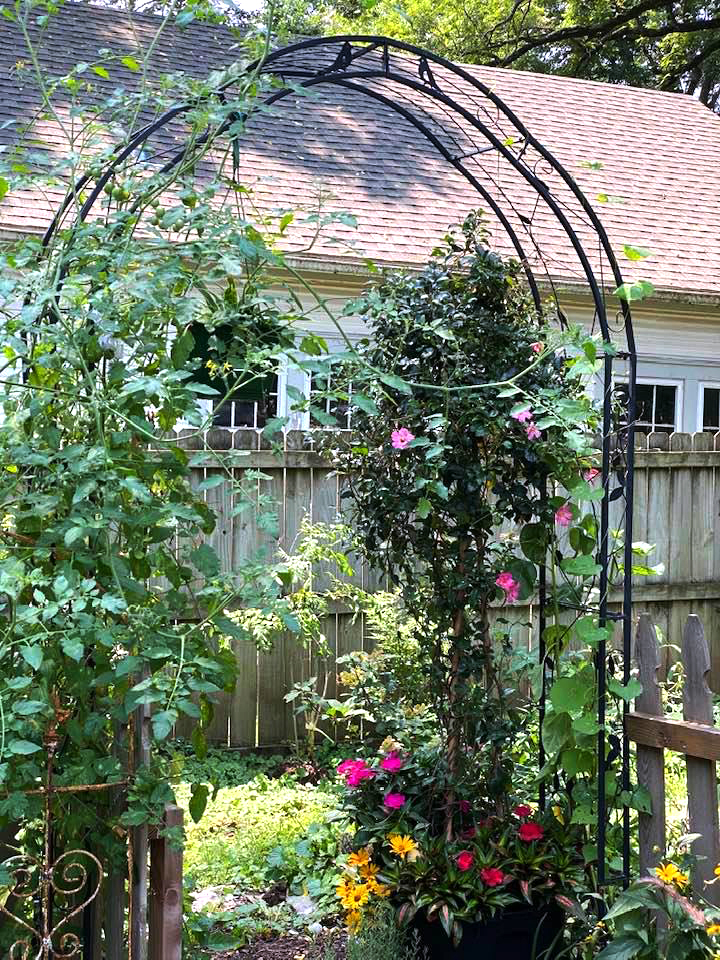
Jacki Kellum Garden
And anywhere I have placed an arbor, I load it with all types of plants. On the above arbor, I have an enormous cherry tomato climbing up and along it and into the sky. Traveling the same course, I have a clematis vine that often boasts a beautiful blue blossom.
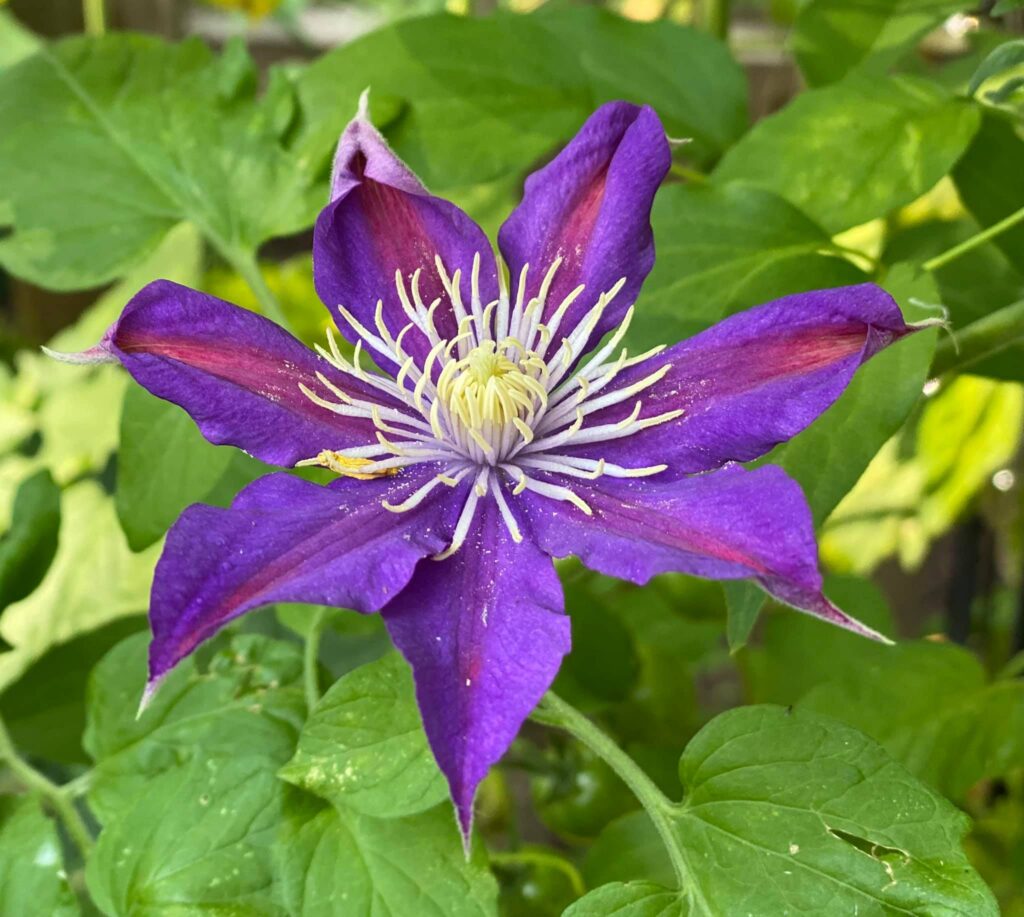
On the other side of the arbor, you see my potted dipladenia and on the other side, you could see that I have a Don Juan rose beginning to make his ascent.
Over and again. I will say that I am a true cottage gardener, and the cottage gardeners of old were peasants who had very small gardening spaces. :Utilizing vertical spaces was essential to their successes in their gardens.
